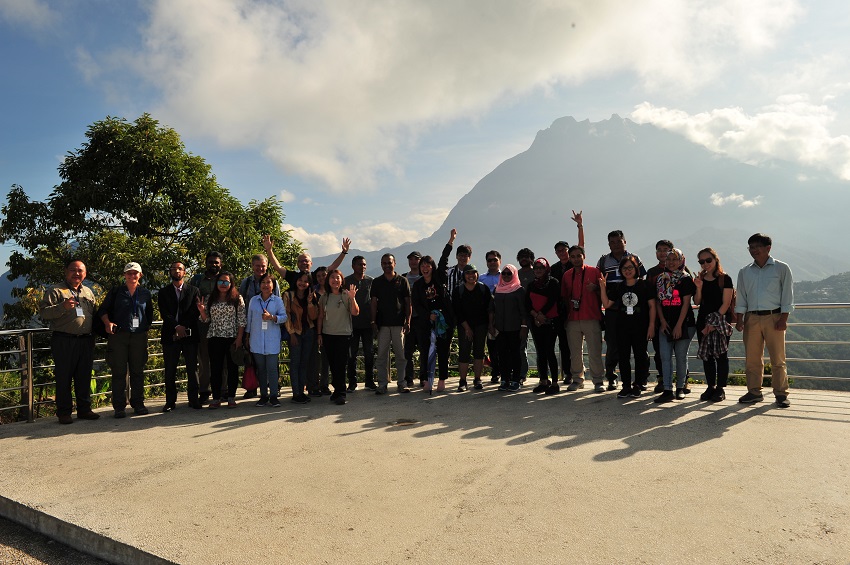Tourism in Protected Areas – A double-edged sword
Tourism in many of Asia’s protected areas is growing rapidly, often leading to a range of environmental and social impacts. The importance of mitigating the impacts of tourism and enhancing its benefits has consistently been identified as a high priority by the members of the Asia Protected Areas Partnership (APAP).
To help address these concerns, the 5th APAP technical workshop was held from 1 to 4 October 2019 in Kota Kinabalu, Sabah, Malaysia, on the theme of “Tourism and Visitor Management in Protected Areas”. The workshop was co-hosted by Sabah Parks and jointly organised with the Tourism and Protected Areas Specialist Group (TAPAS Group) of the IUCN World Commission on Protected Areas (WCPA). Funding support was generously provided by the Korea National Park Service.
“We are all aware that tourism is a double-edged sword. Although it can bring many benefits, including income, employment and international recognition, it can also lead to environmental and social damage. If not managed carefully, tourism can destroy the very assets on which it depends,” said Dr Scott Perkin, Head, Natural Resources Group, IUCN Asia Regional Office during his opening remarks.
The workshop aimed to enhance the capacity of protected area managers and share best practices in tourism and visitor management at the regional level. The event was timely, as the IUCN WCPA Best Practice Guidelines on Tourism and Visitor Management in Protected Areas: Guidelines for sustainability had recently been published and provided the main framework for the workshop. Material was also drawn from a related Massive Online Open Course (MOOC) developed by the IUCN Program on African Protected Areas & Conservation (PAPACO). Participants included 46 mid-to senior-level protected area officers from 14 APAP Member countries: Bangladesh; Bhutan; Cambodia; China; Japan; Republic of Korea; Lao PDR; Malaysia; Maldives; Mongolia; Myanmar; Sri Lanka; Thailand; and Viet Nam.
Dr Anna Spenceley, Chair of the IUCN WCPA TAPAS group, introduced participants to the ten best practice principles of tourism and visitor management in protected areas as well as the environmental, social, and economic impacts of tourism. Prof Amran Hamzah, Professor in Tourism at the Universiti Teknologi Malaysia, provided an overview of tourism in Asian protected areas. He highlighted a number of successful case studies from Malaysia, including the establishment of a management mechanism in Langkawi Island and the development of Community-Based Ecotourism (CBET) in Lower Kinabatangan, Sabah, Malaysia.
The workshop also included field visits to Tunku Abdul Rahman Park, a popular marine protected area, and Kinabalu National Park, which protects one of the most famous mountains in south-east Asia. Participants learned about Sabah Parks’ programmes to engage local communities in tourism, manage tourism concessions, develop park facilities, and enhance both visitor safety and education.
Although workshop participants learned about a range of successful approaches to visitor management in Asian protected areas during the course of the workshop, many challenges were also identified, including: the difficulty of achieving a balance between biodiversity conservation and tourism; over-crowding and deteriorating visitor experiences; the difficulty of ensuring that benefits flow to the local community; waste management; the need to protect the culture and lifestyle of local people; insufficient park management capacity (e.g. staff, park facilities); the lack of sustainable financing mechanisms; and insufficient coordination between different government agencies.
“In light of the many different types of challenges posed by tourism in protected areas, APAP is now considering the possibility of organising in-depth, follow-up workshops and webinars on specific topics such as tourism concessions, visitor management strategies, community-based tourism and benefit-sharing, said Ms Minsun Kim, Programme Officer, Protected Areas, IUCN Asia Regional Office.
About the Asia Protected Areas Partnership (APAP)
The Asia Protected Areas Partnership (APAP) has been designed as a key platform to help governments and other stakeholders collaborate for more effective management of protected areas in the region. The partnership was initiated in 2013 at the first-ever Asia Parks Congress held in Japan, and formally launched the following year at the IUCN World Parks Congress in Australia. It is chaired by IUCN, International Union for Conservation of Nature, and co-chaired by an APAP member organisation on a rotational basis, beginning with the Ministry of the Environment, Japan. The Ministry of Environment, Republic of Korea, is the current co-chair.





